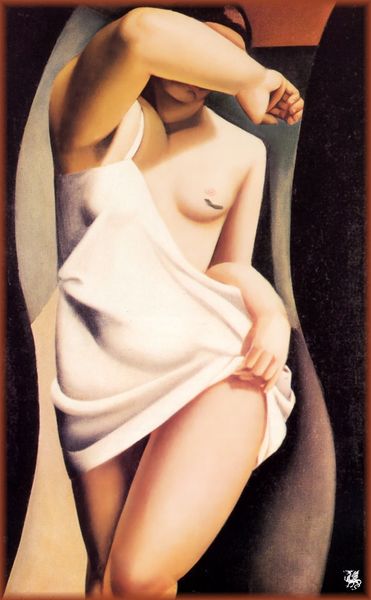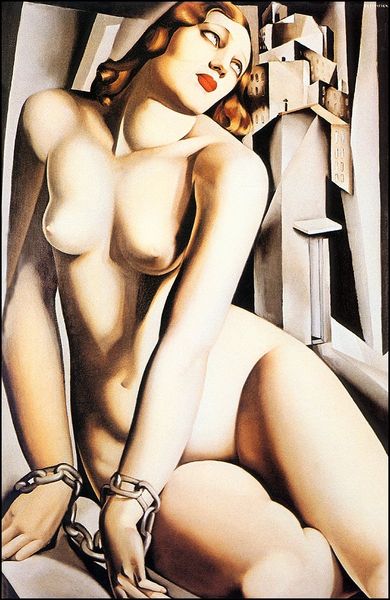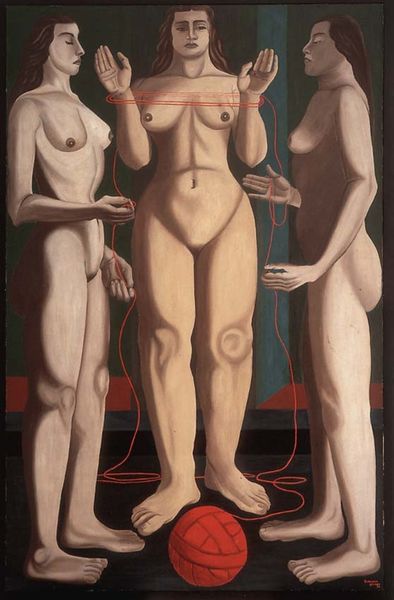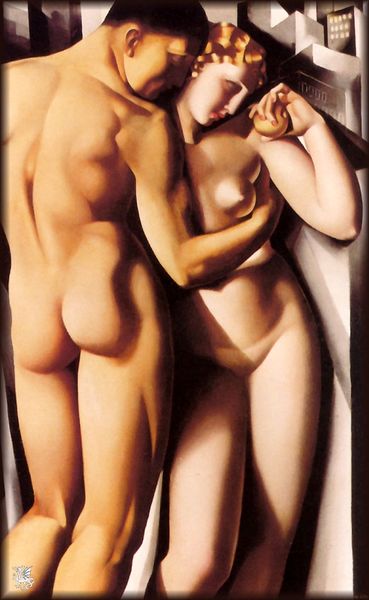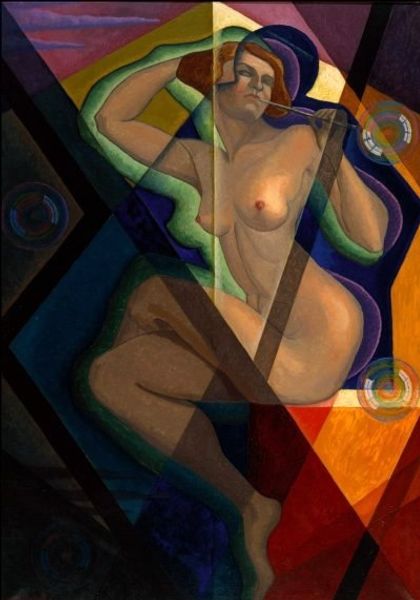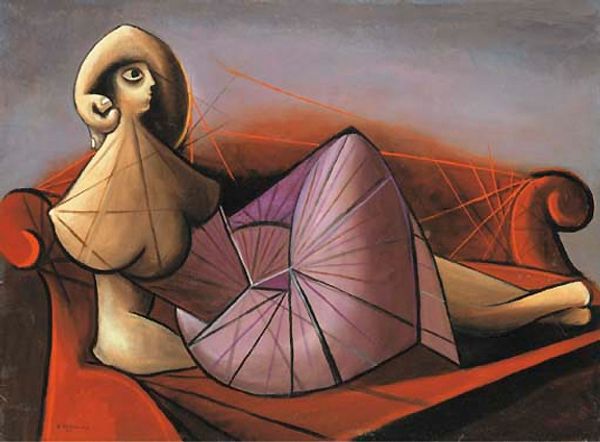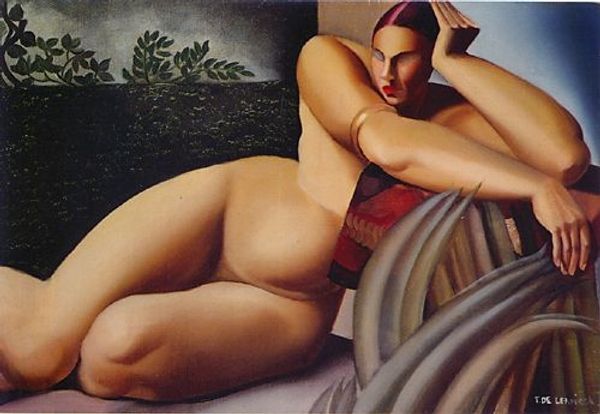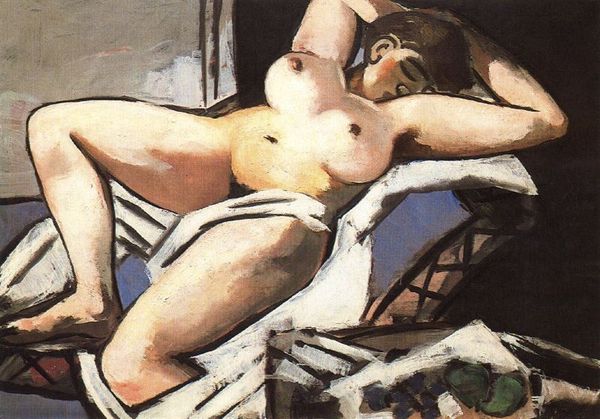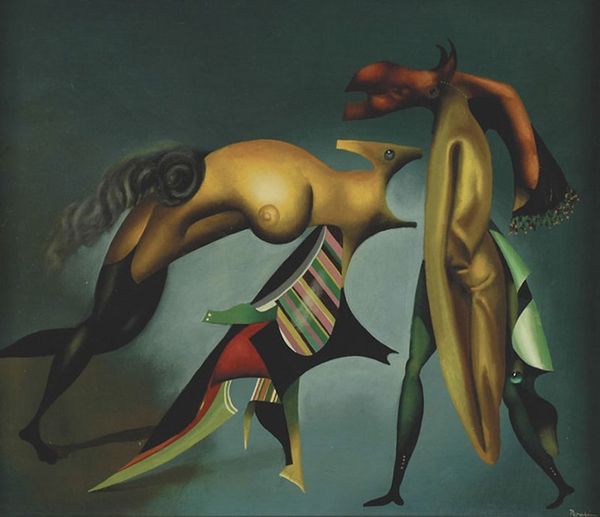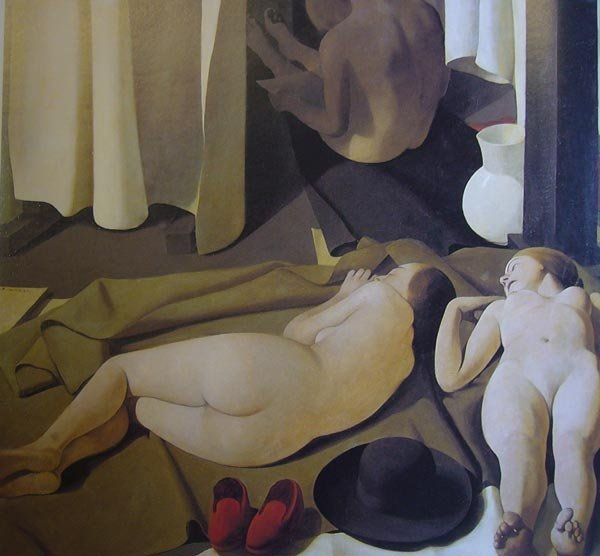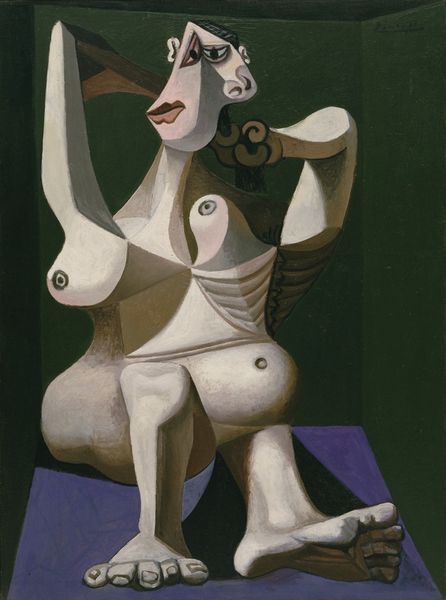
painting, oil-paint
#
portrait
#
art-deco
#
painting
#
oil-paint
#
fine art element
#
nude
#
portrait art
#
modernism
#
expressionist
#
erotic-art
Copyright: Tamara de Lempicka Estate LLC
Curator: Tamara de Lempicka painted "La Belle Rafaela" in 1927. It’s an oil on canvas, quite a striking piece. What’s your immediate take? Editor: Immediately, I’m struck by the sheer geometry of the composition – the almost sculptural treatment of the body set against those sharply defined shadows. And the confident use of light; it’s both sensual and powerful. Curator: Absolutely. Lempicka’s technique speaks volumes about the roaring twenties and the societal shifts around women in the workforce. It highlights a particular, perhaps romanticized, view of women’s newfound freedom after World War I and an era embracing bold femininity. Editor: Formally, the cold palette contrasted with that burst of bright red is compelling. It guides the eye. The composition feels very constructed, carefully balanced. Is that to evoke control, poise? The gaze is averted, and is it about autonomy, perhaps? Curator: That's a key point. Lempicka controlled every stage, from model selection to the finished piece, thus crafting an aesthetic that mirrored the machine age - sleek, efficient and utterly modern. Remember that she did all the making while navigating a very competitive, male-dominated field of professional art. Editor: How do the materials used play into this image of modernism? The canvas provides texture of course but it is the very smooth and blended qualities in the paint itself, to depict this woman, that contributes to this idea of “machine”. Curator: Precisely! Lempicka's choice of oil allows for that high-gloss finish that emulates enamel and thus ties into the aesthetics of luxury automobiles and streamlined appliances of the day. Its not merely an aesthetic choice; it’s about placing her subject within a landscape of industry. She wanted her subjects portrayed, for consumption and commerce, as streamlined subjects for a more efficient society. Editor: Seeing it this way really shifts my perspective. I initially viewed the work through its compositional and visual strategies and not her overall work strategy. The impact is quite transformative. Thank you. Curator: Indeed. When one considers how material realities shape artistic expression and the power relations at play, it illuminates deeper understandings beyond the aesthetic alone. A fine balance of consideration should always be maintained when studying any artistic process.
Comments
No comments
Be the first to comment and join the conversation on the ultimate creative platform.
